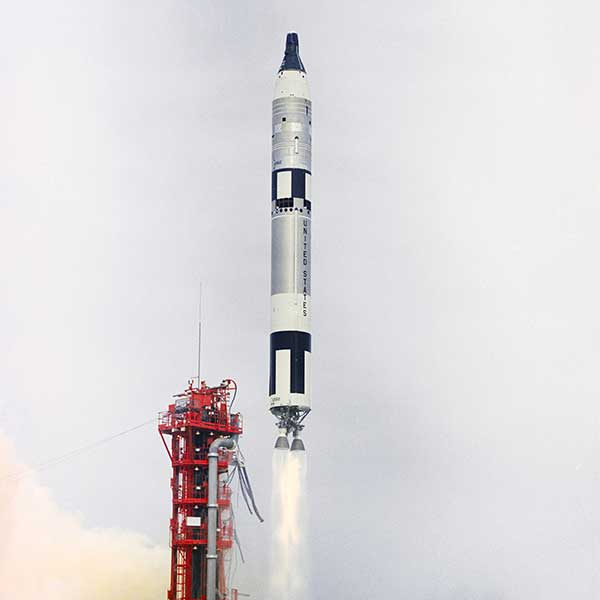American astronauts Frank Borman and Jim Lovell lifted off from Launch Complex 19, starting the Gemini 7 mission on December 4th, 1965.
This record-breaking flight demonstrated numerous technical achievements, among which was the feasibility of a two-week spaceflight. The Mission required NASA to solve some of the problems of long-duration space flight, such as stowage of waste (the crew had practiced stuffing waste paper behind their seats before the flight). Timing their workday to match that of the prime shift ground crews, both men worked and slept at the same time. Gemini 7 conducted twenty experiments, the most of any Gemini mission, including studies of nutrition in space. The astronauts also evaluated a lightweight spacesuit, the G5C, which proved uncomfortable when worn for a long time in the Gemini spacecraft’s hot, cramped quarters.
